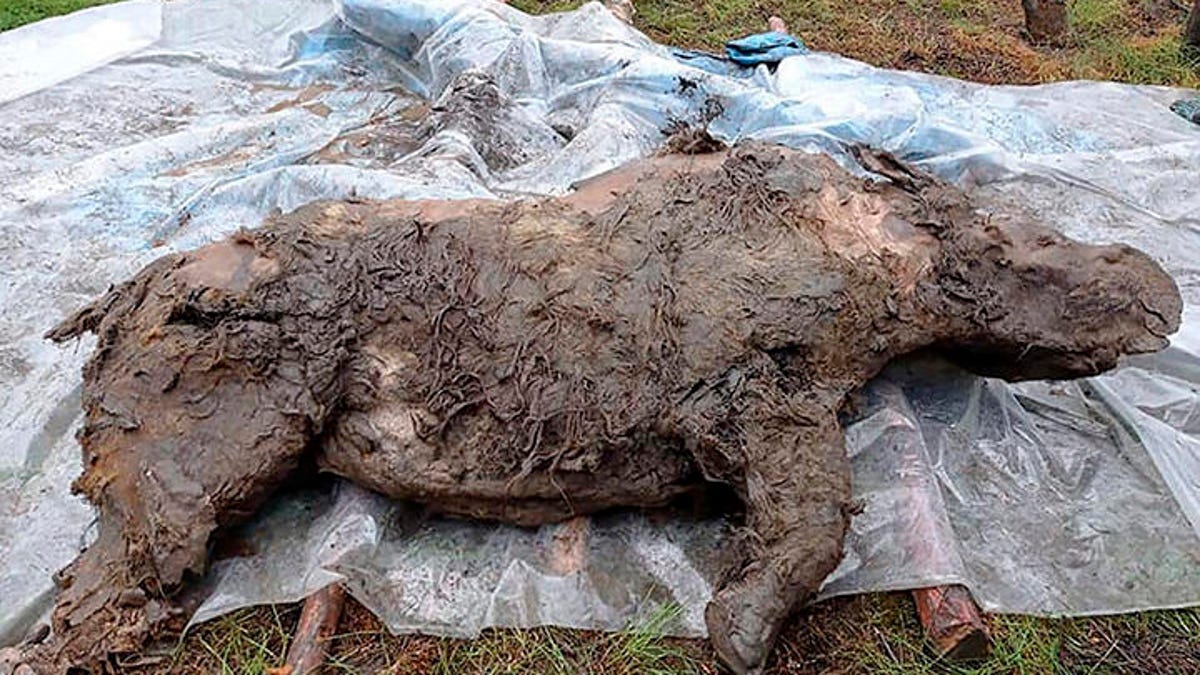A preserved woolly rhinoceros has been exhumed from the permafrost in Russia
The extinct ice age cousin of the woolly mammoth has been pulled from the ice.

A well-preserved woolly rhino was discovered in northern Russia.
An extinct woolly rhinoceros has been discovered and exhumed from the permafrost in Yakutia, in the north of Russia, The Siberian Times reported Tuesday. The carcass was 80 percent preserved and includes intact internal organs, teeth and stomach contents.
"Another extinct ice age beast exhumed from the permafrost," Jamie Woodward, professor of geography at the University of Manchester in the UK, tweeted Tuesday.
The animal lived around 20,000 and 50,000 years ago and was a juvenile. It was discovered in August and is still covered in short, thick brown hair. The horn was found beside the animal, as reported earlier Wednesday by Newsweek.
"The young rhino was between three and four years old and lived separately from its mother when it died, most likely by drowning," Dr Valery Plotnikov, from the Academy of Sciences, was quoted as saying in The Siberian Times. "The gender of the animal is still unknown. We are waiting for the radiocarbon analyses to define when it lived."
More ice age creatures are becoming uncovered as climate change caused the warmest summer in the Siberian Arctic on record, according to Woodward -- but he added people are also blasting the mud with water jets to uncover more discoveries.

